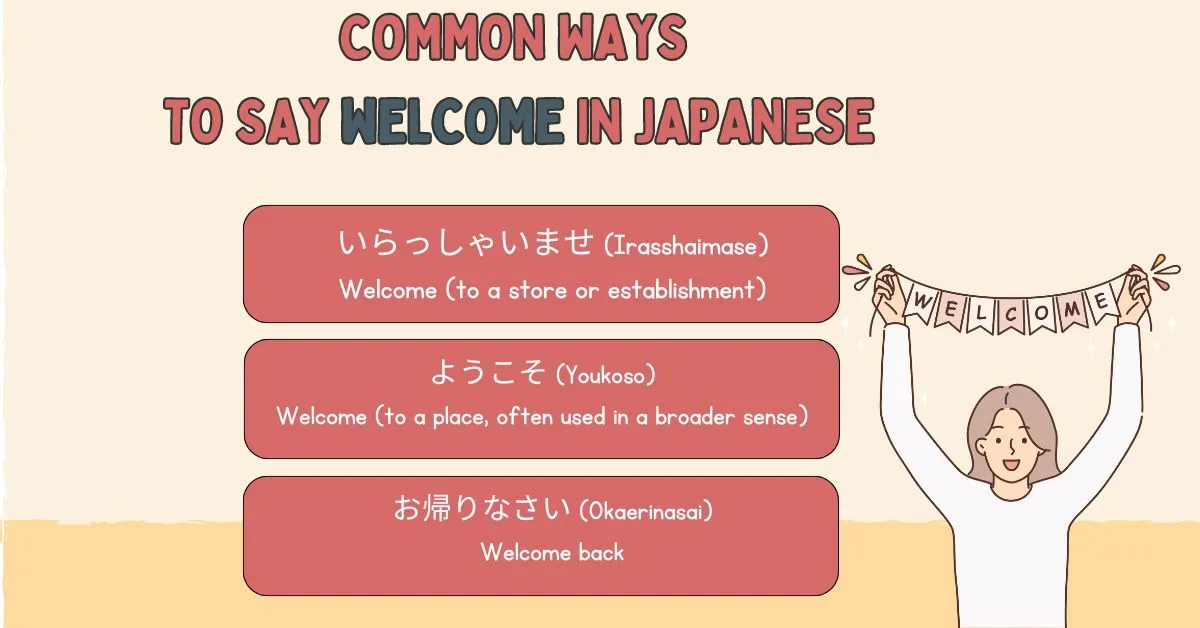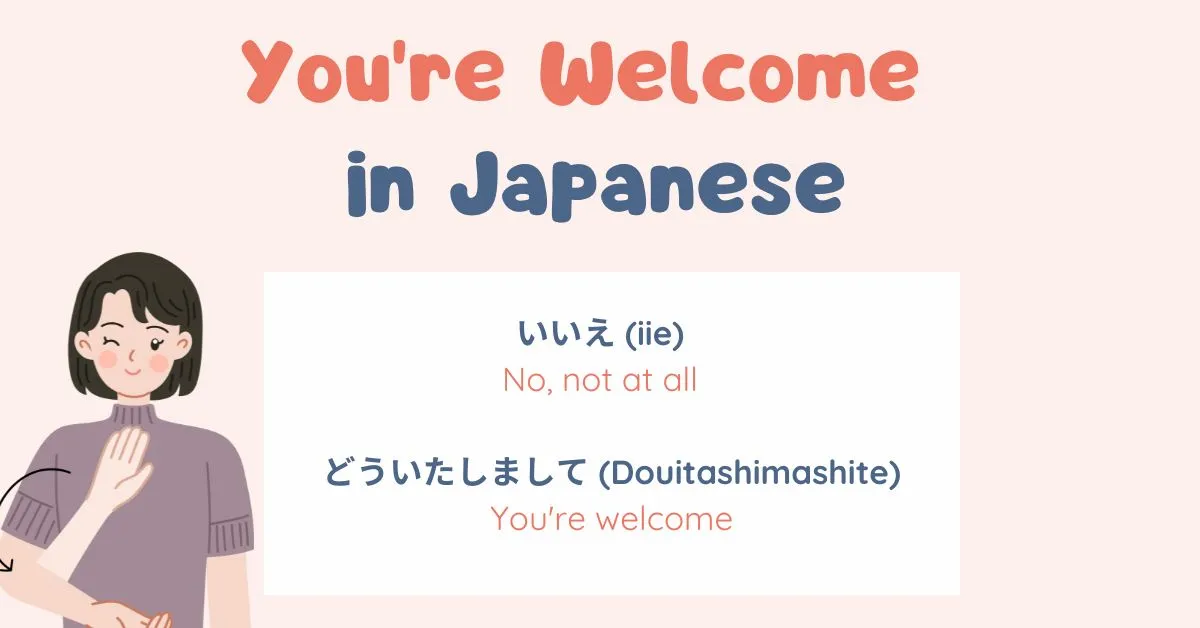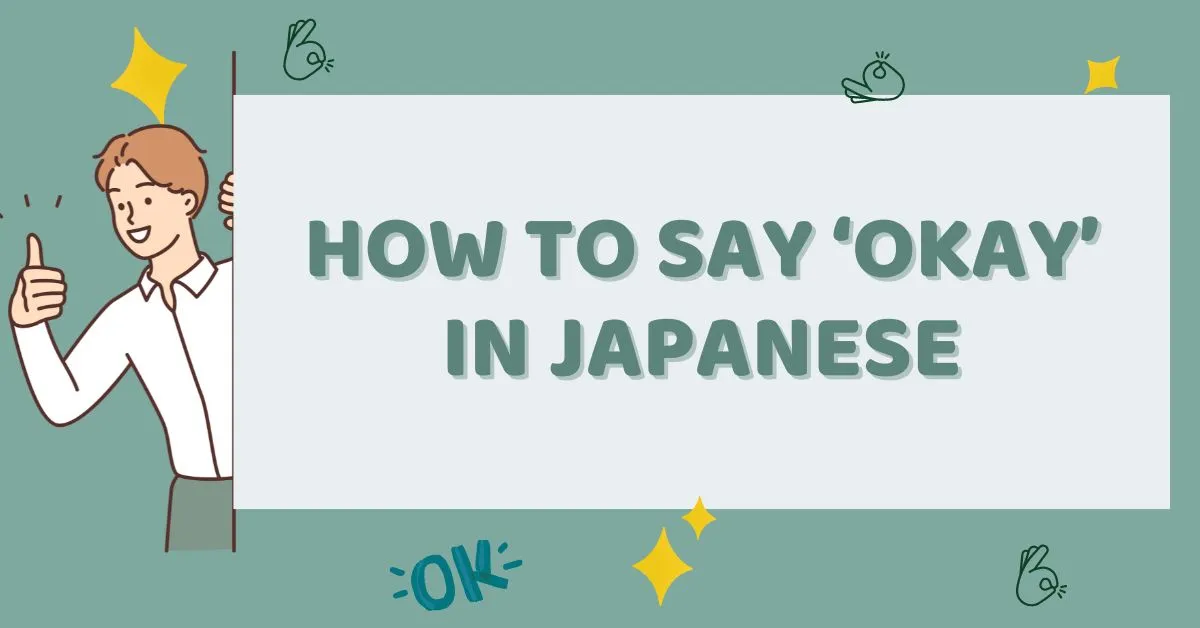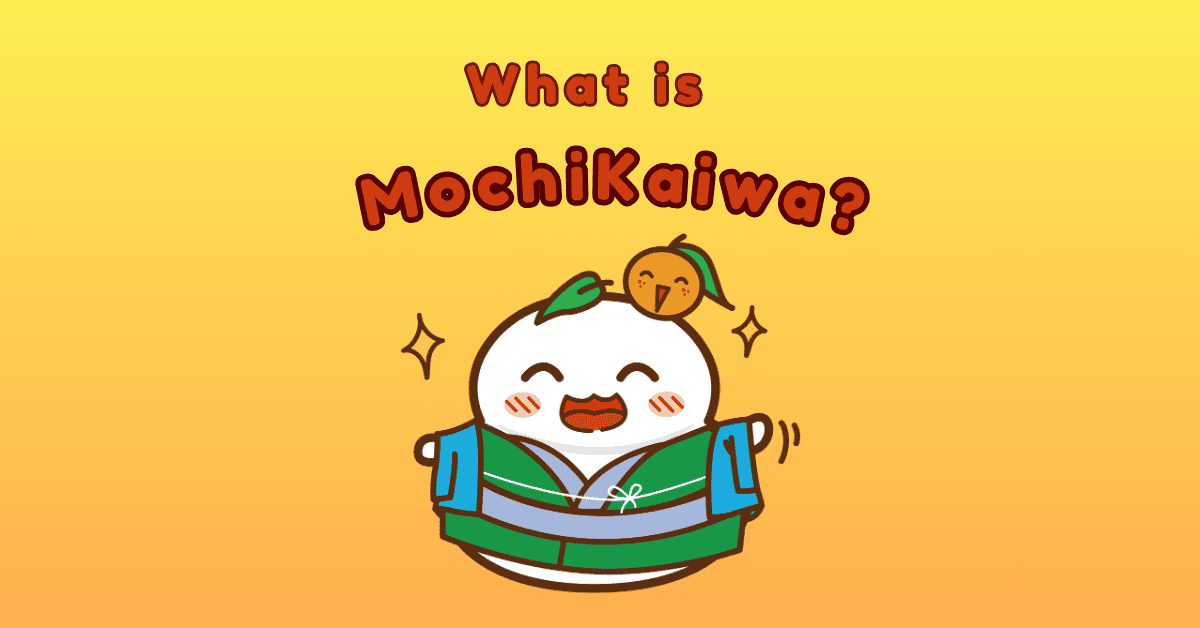Understanding how to say “welcome” in Japanese is more than just learning a simple greeting. It’s a gateway into Japanese culture. In a society where hospitality and respect are deeply valued, the words you use, or “welcome in Japanese word,” can leave a lasting impression. Whether you’re visiting Japan, interacting with Japanese speakers, or learning the language, knowing the proper way to say “welcome” can help you navigate social situations smoothly. This article explores different ways to say “welcome” in Japanese, explaining their meanings, contexts, and cultural significance.
- Common Ways to Say “Welcome?” in Japanese
- Other Ways to Say “Welcome” in Japanese
- How to Say “You’re Welcome” in Japanese
- When and How to Use the Words “Welcome”
- Recommended Japanese Resources and Tools
- Conclusion

Common ways to say “welcome” in Japanese
1. いらっしゃいませ (Irasshaimase)
- Meaning: “Welcome” (to a store or establishment).
- Context: This phrase is often heard when entering a shop, restaurant, or other businesses. It’s a formal and polite way to welcome customers, signaling that the staff is ready to serve.
- Example: When you walk into a Japanese restaurant, the staff will typically greet you with “いらっしゃいませ” as a way of saying “welcome.”
2. ようこそ (Youkoso)
- Meaning: “Welcome” (to a place, often used in a broader sense).
- Context: This is a versatile and friendly expression used when welcoming someone to a location or event, such as a home, city, or country. It can be used in both casual and formal situations.
- Example: “日本へようこそ!” (Nihon e youkoso!) – “Welcome to Japan!” This phrase is often used to greet visitors to Japan.
3. お帰りなさい (Okaerinasai)
- Meaning: “Welcome back.”
- Context: This phrase is typically used to welcome someone back home or to a familiar place. It conveys warmth and familiarity, often used among family members or close friends.
- Example: When a family member returns home after a day at work, you might say “お帰りなさい” to warmly welcome them back
Other ways to say “welcome” in Japanese
お越しくださいましてありがとうございます” (Okoshi kudasaimashite arigatou gozaimasu)
- Meaning: “Thank you for coming” or “Welcome.”
- Context: This formal expression is often used in professional or ceremonial settings to politely welcome guests or attendees, acknowledging their effort in coming.
- Example: At a formal event, the host might say, “お越しくださいましてありがとうございます” (Okoshi kudasaimashite arigatou gozaimasu) to thank and welcome the guests.
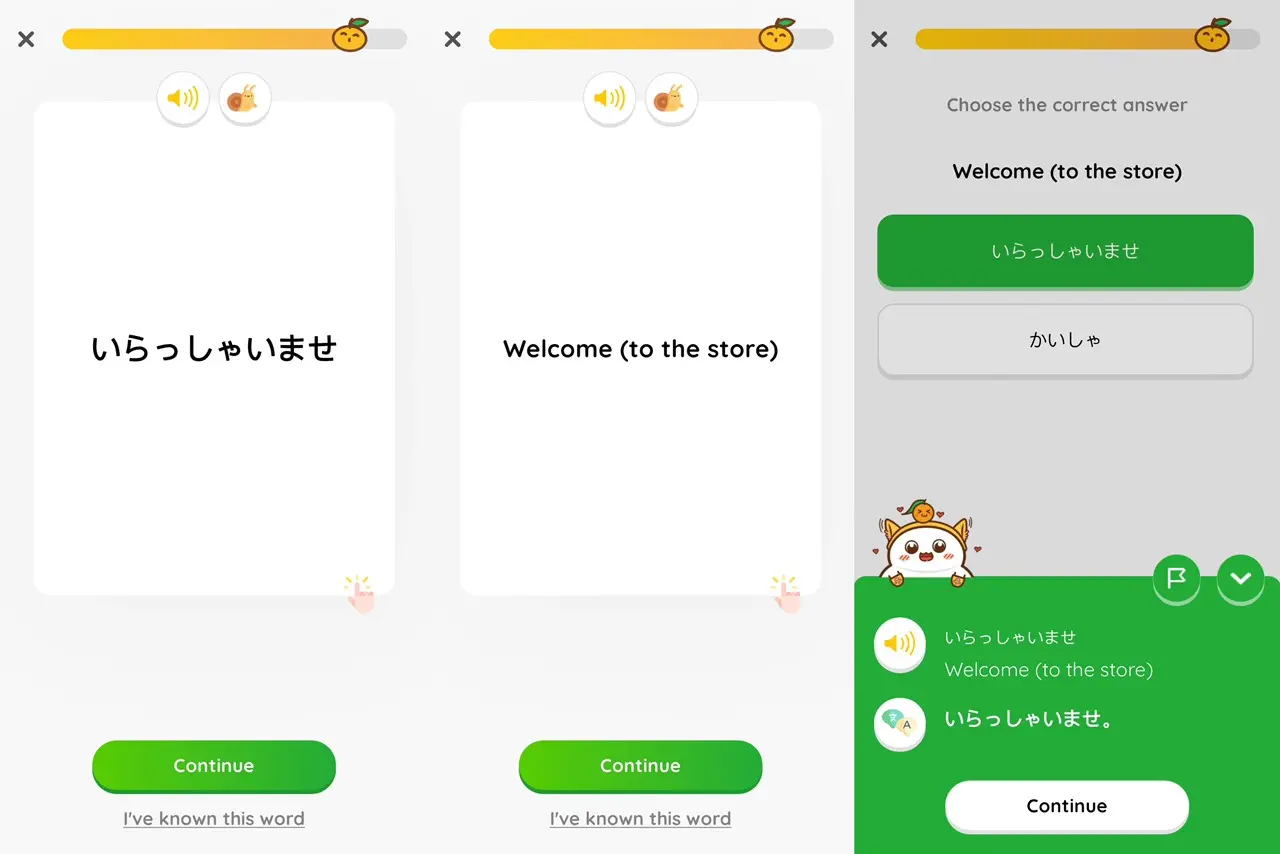
Learn additional vocabulary about how to say “welcome” in Japanese, and use MochiKanji’s Golden Time feature to effectively store and review these words, enhancing your usage and retention skills.
How to say “you’re welcome” in Japanese
1. どういたしまして (Douitashimashite)
- Meaning: “You’re welcome.”
- Context: This is the standard way to respond when someone thanks you. You can use it in both formal and informal situations.
- Example: If someone thanks you with “ありがとうございます” (Arigatou gozaimasu), you can reply with “どういたしまして” to say “You’re welcome.”
2. いいえ (iie)
- Meaning: “No, not at all” or “You’re welcome.”
- Context: Although “いいえ” literally means “no,” it can be used to modestly deflect thanks, conveying that the action was no trouble at all.
- Example: After helping someone, if they express their gratitude, you might respond with “いいえ” to humbly say “Not at all”
When and how to use the words “welcome”
Understanding when and how to use these phrases is crucial for effective communication in Japanese. For example:
- いらっしゃいませ is ideal for retail and service environments.
- ようこそ works well for both casual and formal settings, making it versatile for various scenarios.
- You should reserve “お帰りなさい” for welcoming someone back to a familiar place, such as home.
Recognizing these contexts will help you choose the right expression, ensuring that you convey the appropriate level of respect and hospitality.
Recommended Japanese resources and tools
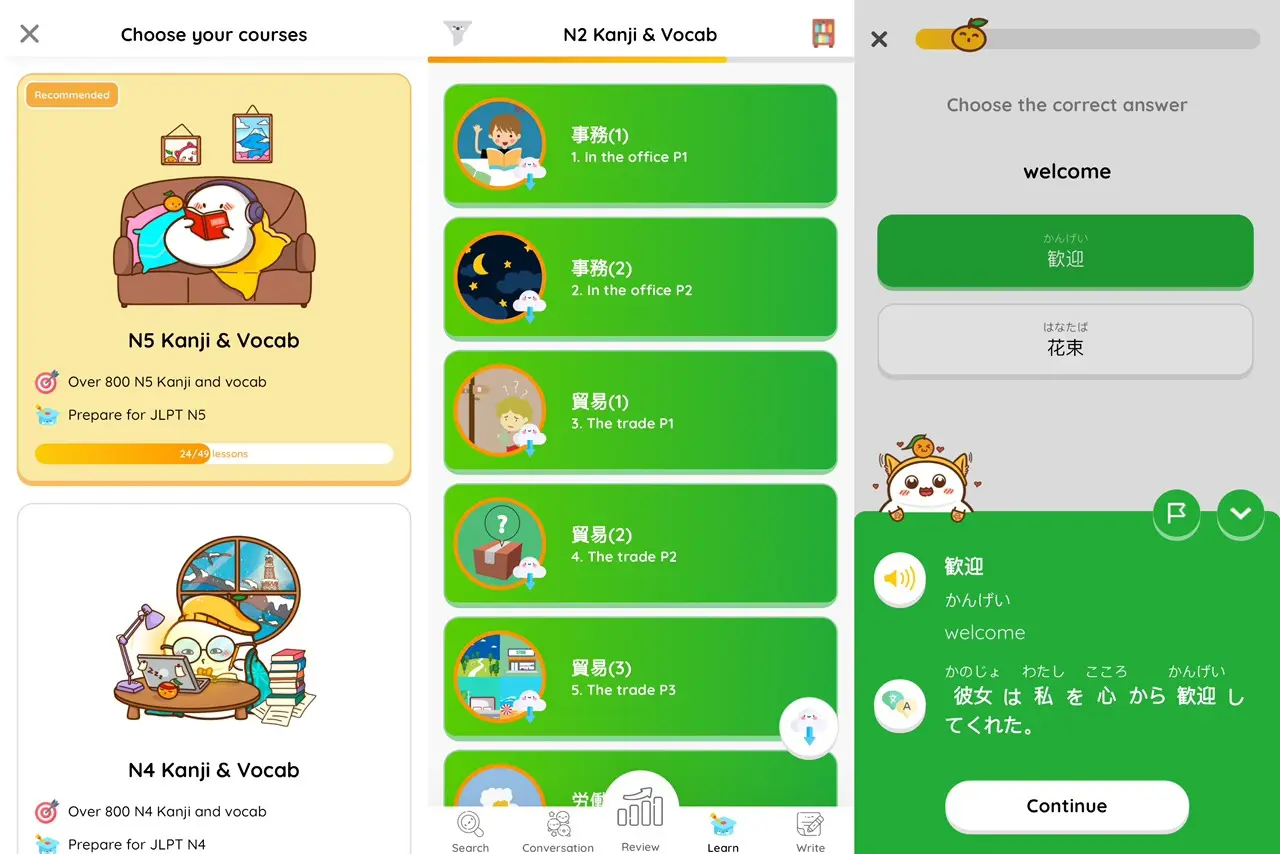
To master these expressions and deepen your understanding of Japanese language and culture, consider using tools like MochiKanji. This app provides a comprehensive vocabulary course that includes essential expressions like “welcome.” It reinforces learning through interactive flashcards, which help you retain and recall new words effectively. Additionally, MochiKanji offers kanji writing practice and conversational exercises to solidify your knowledge and improve your language skills.
Conclusion
Learning how to say “welcome” in Japanese word opens up new opportunities to connect with others in meaningful ways. Each expression, whether it’s the formal “いらっしゃいませ” (Irasshaimase) or the friendly “ようこそ” (Youkoso), reflects the deep values of respect and hospitality in Japanese culture. As you continue to explore Japanese, these greetings will become essential tools in your communication, helping you build positive relationships and experiences.

